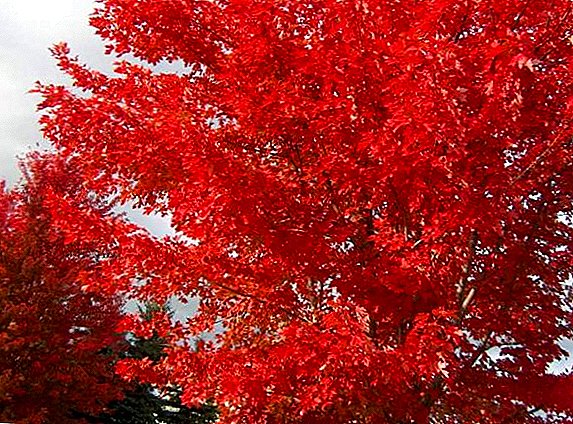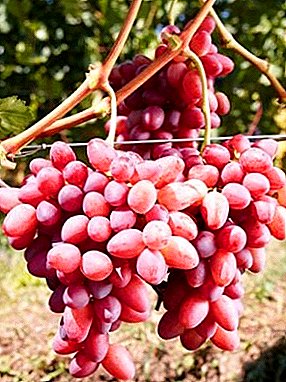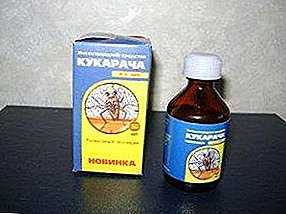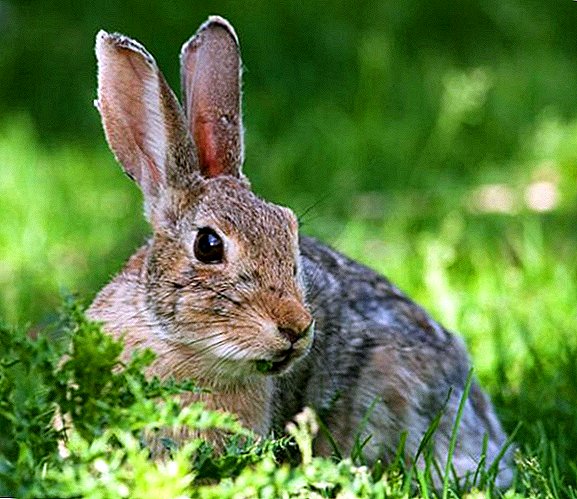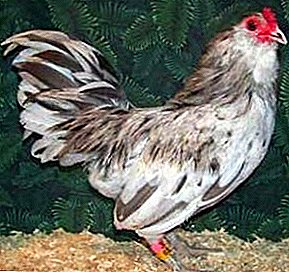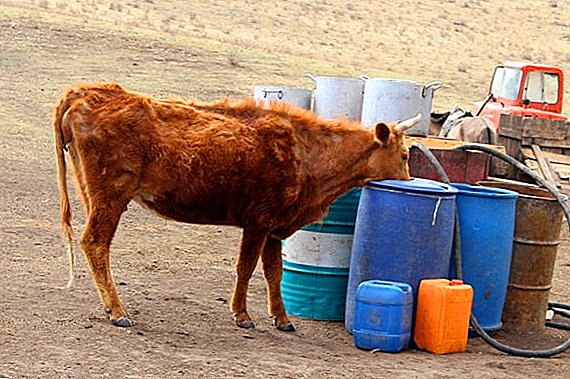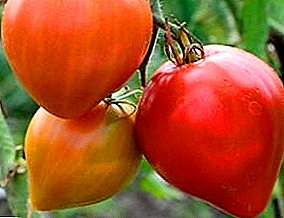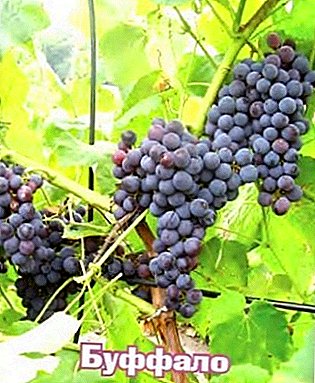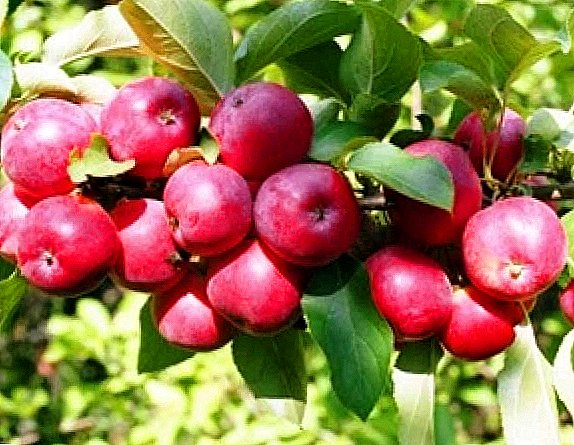
Each climatic region has its own characteristics, and not all apple varieties are suitable for it. To grow an excellent garden tree and get great harvests from it, you need to familiarize yourself with all the features of the apple tree.
Today we will select varieties for the Northwest climatic region and consider the features of their planting.
We get acquainted with varieties of apple trees for the North-West
Sort of apples "Antonovka Ordinary"

A very common apple tree, bred by national breeders at the beginning of the last century. It survives well and bears fruit in Central Russia, in its North-West region, in the territory of all Belarus and the Northern regions of Ukraine. Early winter apples "Antonovki" differ in excellent presentation and occupy a significant part of the apple market.
Sizes of fruits basically medium. The shape can be both rounded and flat-rounded. Although the tree often fruits one-dimensional apples, some have a slight conicity to the calyx. Ribbing is well marked.
The peel of the fruit is smooth with a slight rustiness near the funnel. The color of the apples, which are already ready for removal, is greenish-yellow. But after a certain period of lying apples completely turn yellow. "Blush" in the fruit is rare.
The flesh of the fruits of "Antonovka Ordinary" is very juicy, yellowish under the onset of full ripeness. Taste in apples of this variety sweet and sour, but with a characteristic distinctive acidity, which has become a kind of benchmark at the moment.
Also, the fruits of "Antonovka" have a very pleasant and stimulating smell appetite. 100 grams of fruit variety "Antonovka" contains approximately 17 mg of ascorbic acid.
Vigorous tree "Antonovki" reaches a very large sizethat, however, still does not distract gardeners. The crown initially acquires an oval shape, but with the establishment of regular fruiting it expands a little, the branches descend lower to the ground. The branches of a tree depart from its trunk at an angle of about 70 degrees, they produce a large number of fruit bearing rings.

The variety is able to quickly and accurately adapt to new climatic conditions. Yield "Antonovki" high, on average, equal to two hundred quintals per hectare. There have been cases when up to 1 thousand kilograms of fruit were harvested from one Antonovka tree.
The high presentation of apples, excellent taste and juiciness make apples suitable for use in raw form and after processing. Frost resistance and diseases in a variety of high.
Fruiting in tree varieties begins 7-8 years after planting the tree. Even due to the fact that later the abundance of their crops, the tree is catching up, many people refuse to plant it. Fruits are stored for only 3 months; the closer to the Southern region trees are planted, the more likely that fruiting with age have them will not be regular.
Variety of apples "Anise Striped" ("Anise Gray")

Another variety that lacks parental. However, this does not diminish its merits. Excellent zoned for North-West Russia. Fruits ripen late, in October.
The fruits are mostly one-dimensional, medium or slightly smaller than medium size. Their shape is rounded, flattened, slightly conical closer to the cup. Characteristic well-marked ribbing. The skin of the mature fruit is smooth, only in the funnel, roughness and roughness may occur. Characteristic wax coating. The color of the ripened fruit is light green, covered with a mottled-striped "blush" pinkish hue.
When matured, the flesh acquires a white-greenish color and fine-grained structure. Fruit juiciness is high. The sweet and sour taste is accompanied by a very pleasant aniseed aroma, which is felt even without cutting an apple. The content of ascorbic acid is relatively insignificant, only 7 mg per 100 grams of apple.
The strong-growing tree "Anis Striped" has a very dense crown cone-shaped. The crown consists of skeletal branches of medium thickness. The bark on the branches of brown, characterized by roughness. The fruit-bearing parts of the tree are spears and kolchati. Good adaptability and stability the tree guarantees its durability: it can live and bear fruit for up to 100 years.
The variety is resistant to frost and drought. Fruiting generously: going from one tree about 300 kilograms fruits. Wins in other varieties of its durability and taste of the fruit. For use, the fruits are suitable not only raw, but also as drying, apple wine, dough, in urination.
Inferior to other varieties of "Anis" with the smallness of their fruits. Shelf life their maximum is only 2 months, trees become fruiting at the age of 5-6 years. The variety is self-infertile. Due to the abundance of yields can be manifested periodicity of fruiting.
It is also interesting to read about the best columnar apple varieties for the Moscow region
Description varieties of apples "Grushevka Moskovskaya" ("Grushovka", "Skorospelka")

This variety is early summer and pleases with its fruits in the very first days of August. It appeared as a result of the efforts of national breeders. Well known in the North-West and Ural region.
Fruit of this sort little ones. In form resemble a turnip - strongly flattened. There is practically no ribbing. No rust on the smooth skin. Under the skin there are so many dots of white.
The color of the ripened fruit, ready for cutting off, is yellow-green. After a period of lying down they become white. The main color is covered with a blurry "blush" and pinkish stripes.
The color of the pulp of this variety is mostly white with a yellow tinge, but under the skin it can be pinkish. Juiciness high. The taste is very delicate, aromatic, sweet-sour with a pronounced predominance of acid. The content of ascorbic acid in the flesh is insignificant, about 9.3 mg per 100 grams of fruit.
Tree yet again vigorous. Crohn at a young age has a wide pyramidal shape, which with the increase in crop volumes turns into spherical. The branches are strong and coarse, a lot of leaves. Fruiting in this class are only kolchatki.
The trees of this variety are very early begin to bear fruitthan often cover all other shortcomings. High-yielding. Resistance to frost is high, exceeds the resistance of other varieties for the North-West region. Maturation, as already noted, is very early.
Fruits are small and ripen non-simultaneously (for this reason they may fall). The shelf life of fruits is only 2-3 weeks, therefore they are suitable only for fresh consumption and for squeezing juices. Resistance to scab is average.
Variety of apples "Asterisk": description

Unlike the previous ones, this variety is the result of the scientific work of professional geneticists and a breeder, and its parents are Pepinka Lithuanian and Anis. The variety is winter, its widest zoning received in the North-West region.
Fruit this variety small but tasty enough. In form, they are flattened and round. The skin is smooth, covered with a thin wax coating. The main color of the fruit is light green. The cover color is presented in the form of a blurry "blush", which has a dark red tint. Since the topcoat occupies almost the entire surface of the fruit, the apple trees have an attractive reddish color.
The flesh is most often greenish, but due to the intensity of the topcoat, it is pinkish near the skin in most varieties. Fruit juiciness is high. The structure of the flesh is fine-grained. Taste rated by tasters like good, has a sweet-sour shade. The content of ascorbic acid in the pulp is 15 mg per 100 grams of fruit.
The strong-growing tree of this variety has a rounded crown. However, over time, she, burdened by crops, expands a little and wilts. The crown consists of large branches of the skeletal type and thin branches. Fruits bearing a tree are twigs and a lance.
Yield this variety is observed regular. The presentation of the fruit is quite high, which is ensured by a bright attractive color. Fruits are stored for a very long time, until February. Also, the advantage of this variety are the taste of the fruit.
However, the already not large fruits with the age of the tree begin to shrink. For this reason, the tree requires regular maintenance and pruning of the branches to stimulate the growth of the fruit. By the way, the tree responds to pruning perfectly. Fruiting begins basically from 5-7 years.
Apple variety "Cinnamon New"

This variety belongs to the late autumn. His parents are varieties "Cinnamon Striped" and "Welsey". For its growth is not mandatory black soil, so it is widely distributed throughout the territory of the North-West region and in the Central. The variety is cultivated by amateur gardeners and entrepreneurs in large industrial gardens.
The size of the fruit is relatively large: the average weight ranges from 130 to 160 grams. The shape of ripe apples is rounded conical, correct. One-dimensional fruits. The skin is very dense, but smooth.
There are many subcutaneous points; they are grayish or even rusty in this variety. The color of the main color is greenish yellow. Over the entire surface of the fruit there are a large number of blurry strips and specks that are topcoat.
The creamy flesh is not very dense in structure and very delicate in taste. Fruit juiciness is high, the sweet and sour dessert taste of Cinnamon New is complemented by a very pleasant aroma. 100 grams of the fruit contains about 15 mg of ascorbic acid.
The tree of this variety grows very tall. It is also characterized by a wide pyramidal, later a high circular crown. Also, the crown is very thick, consists of large branches of the skeletal type. The branches are placed on the trunk at an acute angle. Fruiting part of the tree are collar.
The advantage of this variety is its excellent both in appearance and taste, fruits. Fresh consumption of apples "Cinnamon New" lasts until January. Ripened fruits do not fall off on their own. At the same time, the tree itself is highly resistant to frost and scab.
But, fruiting a tree this variety starts late - only 6-7 years after planting. Despite the fact that with age, the yield only increases, the tree can begin to bear fruit periodically. Also, the vigorous crown is very uncomfortable at harvest and takes up a lot of space in the garden. Fruits may crack from high temperatures.
Proper care - everything you need to know about varieties of the North-West region
We cut the apple trees of these varieties

Since the trees of the North-Western region are vigorous and occupy a lot of space in the garden, they must be constantly pruned. At a young age, this process will allow not only to form a correct and convenient form, but also increase the quality and size of the fruit. In fruit-bearing trees, pruning is mainly aimed at removing damaged and dried branches.
Now about the features of fertilizer
How much and how much to fertilize an apple tree will mainly depend not on the variety, but on the soil in which it is planted. If the soil is fertile, then fertilizer is practically not needed.Perhaps once a year, you can add a tree with a solution containing nitrogen - this stimulates the setting and growth of fruits.
However, if the soil is not very fertile, a large amount of humus and peat is introduced into it when directly planted. Besides.
Top-dressing can be done up to 6 times a year, with the addition of nitrogen, superphosphates and calcium sulfate.
Should I water the trees?
The apple tree practically does not need watering, especially it concerns such tall trees that represent the North-Western varieties. Water only need sapling immediately after planting and over the next month at intervals of two weeks.
Also, if the summer will be very dry, then watering for the apple will be mandatory - at least 5 buckets of water should be needed for one adult tree.
Caring for an apple tree in winter

When preparing a garden for winter, it is important to consider its resistance to severe frosts. An important factor is also the depth of the roots - it depends on what depth of soil freezing can be dangerous for your apple tree.
The varieties of the North-Western region are tall, so the root system of these trees is also deep. Before winter them okolostvolny circle need to lay a layer of peat and humus about 10 centimeters high. With the arrival of frost, the layer can be increased, including due to the snow that fell out.
The greatest danger to apple trees in winter is rodents. To protect the tree from them, tie a tree trunk down to the lower branches with spruce branches. Better yet, twirl it with ruberoid. Thus, rodents simply do not reach the trunk.
Planting Apple Trees in the North-West Region
What time to choose for landing?
Despite the fact that both autumn and spring planting are suitable for apple trees, the first option is still better for these varieties. This is due to the fact that the frosts in this region can come very early, and the seedling needs to be transplanted two weeks before its occurrence.
At the same time, it is likely that at the time of transplantation the tree will not have time to go into a state of calm and you can damage it very much during transplantation.
Spring planting should take place several days after the final melting of the snow and soil.
What are the soil requirements?
The best option for the apple of the specified region are fertile loam with good drainage system. It is categorically contraindicated for the apple varieties described above that are clay and marshy soils. Soil with a high level of acidity will not work either (but it can be quenched by adding nitrate to the soil).
Go to landing
The hole should be dug in advance - 2-4 weeks before planting. Although if it is a spring planting - at least in 3-4 days. At the bottom of the pit, the top layer of soil is poured along with humus and peat. We seal it and spread the roots of the seedling.
Drop the seedling in such a way that a root collar remains above the soil. Next, carefully compact the soil and pour the seedling with 2-3 buckets of water.


